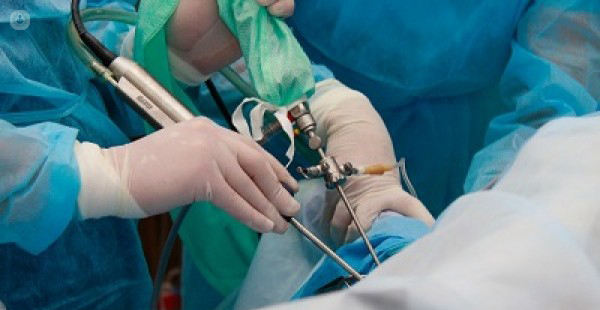Lung biopsy
Dr Enson Thomas - Pulmonology & respiratory medicine
Created on: 11-13-2012
Updated on: 09-20-2023
Edited by: Kate Forristal
What is a lung biopsy?
A lung biopsy is a medical procedure performed to check lung tissue for disease or cancer. The procedure uses images to detect any abnormalities in the lung tissue, and then a small sample is removed for examination under a microscope.

What does a lung biopsy involve?
The procedure lasts for around 30 to 60 minutes. An imaging system may be used to visualise and identify the area chosen for the biopsy. You sit on a table with your arms outstretched, while a sedative is administered and medication is injected for localised pain. A small incision is then made in the skin, through which the needle is inserted for the biopsy, to remove a sample of lung tissue. Once the procedure is complete, the needle is removed and pressure is applied to the affected area to stop any bleeding. A bandage is then applied. After the lung biopsy, a chest x-ray is performed, and the sample obtained is sent to a laboratory for a thorough examination to determine whether any disease or pathology is present.
Why would a lung biopsy be performed?
Diagnosis of lung diseases: A lung biopsy is often done to diagnose lung diseases that cannot be definitively diagnosed through other methods like imaging or blood tests. Conditions that may require a lung biopsy for diagnosis include lung cancer, interstitial lung disease, pulmonary fibrosis, sarcoidosis, and certain infections like tuberculosis.
Staging of lung cancer: If lung cancer is suspected, a biopsy may be performed to determine the type and stage of cancer. Staging helps guide treatment decisions and prognosis.
Characterisation of lung nodules: When a suspicious lung nodule is detected on imaging tests like CT scans, a biopsy can determine whether the nodule is cancerous or benign (non-cancerous).
Evaluation of infections: Lung biopsies may be performed to identify the cause of severe or unusual lung infections, especially when standard tests do not provide a definitive diagnosis. This can include fungal, bacterial, or mycobacterial infections.
Assessment of lung inflammation: In cases of chronic lung inflammation or scarring (fibrosis), a biopsy can help determine the cause and extent of the inflammation or damage.
Evaluation of transplanted lungs: Lung biopsies are sometimes done on individuals who have undergone lung transplantation to monitor for signs of rejection or infection.
Research and clinical trials: Lung biopsies may be performed as part of medical research studies or clinical trials to advance our understanding of lung diseases and test new treatments.
Preparing for a lung biopsy:
Before seeing the specialist for the procedure, you need to follow some guidelines. For example, do not eat anything for 6 to 12 hours before the procedure, do not take aspirin, nonsteroidal anti-inflammatory drugs (NSAIDs) such as ibuprofen, or blood thinners such as warfarin in the days prior to the biopsy. If you have any questions about taking medication, you should consult your specialist.
What do you feel during the biopsy?
You will be given an anaesthetic to reduce the pain. However, as soon as the biopsy needle touches the lung, you will feel pressure and pain that may last for a few moments.
Meaning of abnormal results:
Abnormal results from a lung biopsy may indicate the following diseases or pathologies:
- A viral, bacterial, or fungal lung infection
- The presence of cancer cells, indicating lung cancer, or mesothelioma or pneumonia.
